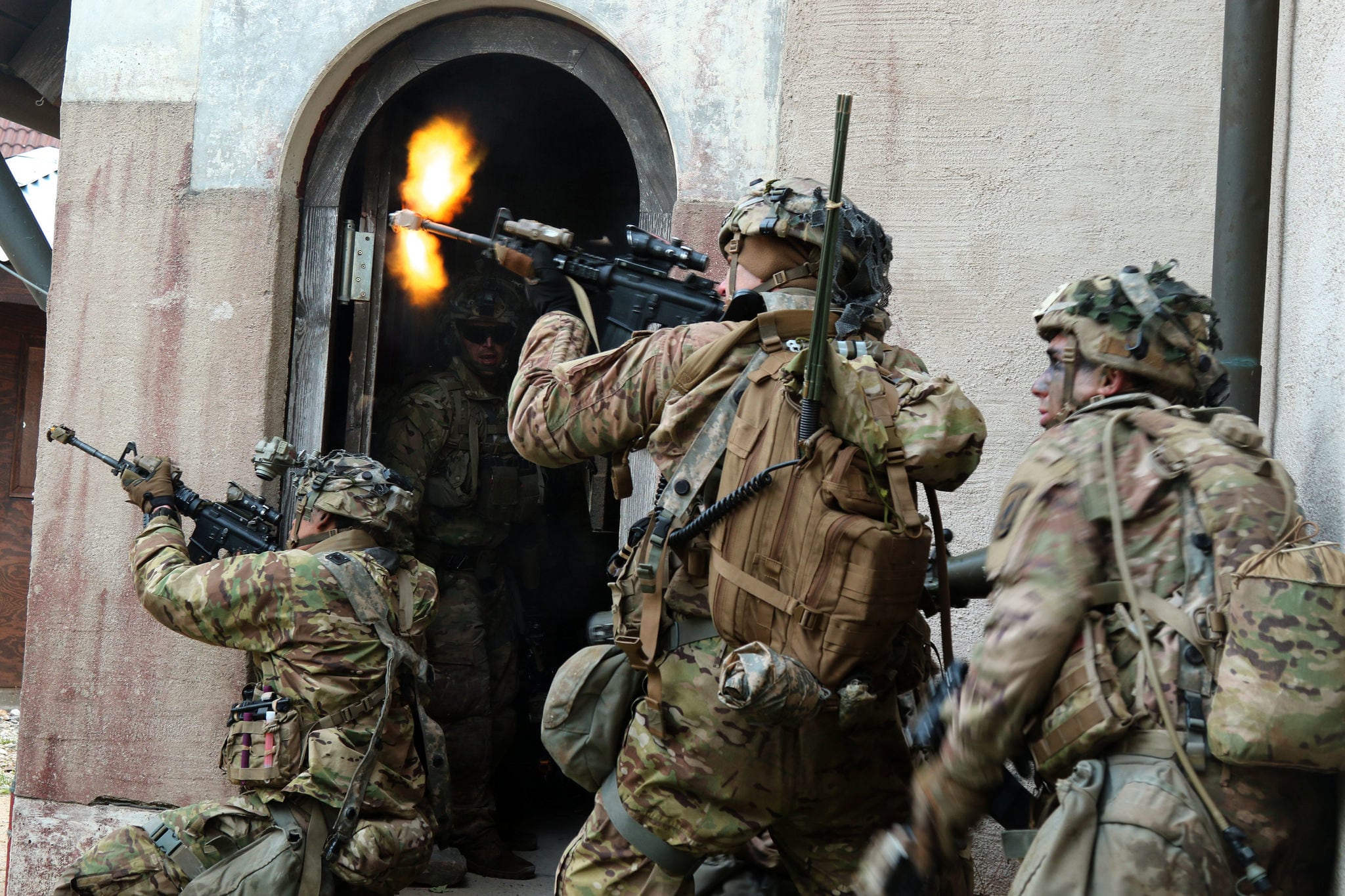FORT EUSTIS, Va. ― As of October, 63 battalions around the Army are getting trained up on the service’s first new PT test in 40 years. Not only are there new events and new scoring standards, something else is different: Currently, the team behind the new Army Combat Fitness Test isn’t working on any alternate events for soldiers with long-term injuries.
Rather than allow someone with bad knees to switch out the 2-mile run for a stationary bike, for example, the Center for Initial Military training is developing an interim assessment to figure out when ― or if ― a soldier will be able to complete an ACFT again, and thus be combat ready.
“If we give this test battery to somebody who’s had a leg injury, it will tell us that they will be ready in a certain amount of time to start training for the ACFT again,” Lt. Col. David Feltwell, CIMT’s command physical therapist, told Army Times on Tuesday.
The Army Research Institute of Environmental Medicine is working on the assessment, he said. Rather than taking someone off of an injury profile after a subjective amount of time, soldiers would be evaluated before returning to duty.
“This validates that you’re capable of going into combat, right?” Feltwell said of the ACFT. “So there is no alternate.”
And in the long term, injured soldiers will have a better idea of their physical readiness before coming back from a profile.
RELATED

“We’re doing you and the Army a favor,” Feltwell said. “We’re not going to just keep you rolling along. Because if you deployed, and you’re not able, there are obvious repercussions.”
While no alternate events are being tested currently, according to Michael McGurk, head of CIMT’s research and analysis directorate, the door is still open for them down the road, after more policy decisions have been worked out.
Making adjustments
Beyond the question of alternate events, CIMT has been using the fiscal year 2019 ACFT pilot period to iron out more of the test’s details.
The six-event test measures domains of fitness from explosive power to agility to strength, but the Army is still working out the finer points of how best to assess and grade them.
The version of the ACFT unveiled in July includes a hand release push-up, which requires a soldier to lower him or herself completely to the ground and then lift up their hands between reps.
This makes the event more challenging, and more easy to count, because one has to pause and reset in between reps. But during the pilot, test battalions are also exploring the T push-up, which requires extending arms out to the side after hitting the ground.
Not only does that variation engage upper back muscles as a counter to the pushup’s engagement of the chest and biceps, it also simulates combat pretty well, according Whitfield East, a research physiologist with CIMT.
“So while a soldier in a firefight will be lying prone, firing their weapon, they might reach out to the side to grab a magazine, or adjust a sandbag,” East told Army Times.
During the test pilot, Feltwell said, CIMT expects to compile feedback from about 40,000 soldiers, as each battalion will hold a minimum of two complete ACFTs.
That data will help CIMT determine the scoring scale. For instance, the current 100-point max score for the deadlift is 340 pounds, while the minimum is 120.
That could change, Feltwell said, if an overwhelming number of soldiers have a hard time making that minimum, or alternatively, if a great number of them have no trouble hitting that max.
A perfect ACFT score will no doubt be tougher than maxing the current Army Physical Fitness Test, but it will still be manageable.
“If it was going to be too difficult, we wouldn’t be able to do it,” Feltwell said.
Meghann Myers is the Pentagon bureau chief at Military Times. She covers operations, policy, personnel, leadership and other issues affecting service members.




